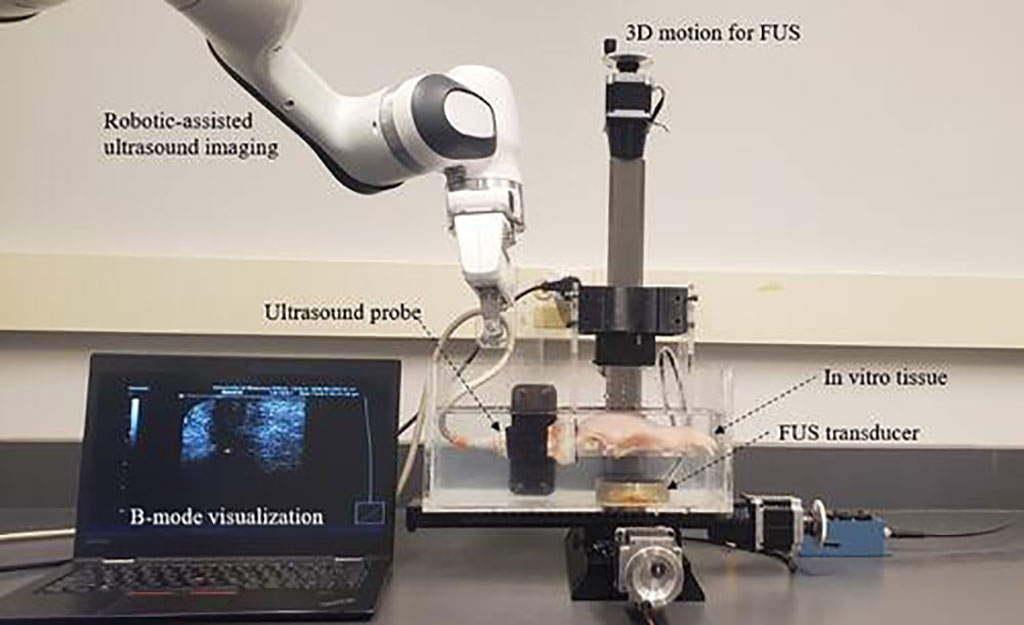First AI-Powered Ultrasound Technique Destroys Wide Range of Deadly Cancerous Tumors
Posted on 07 Dec 2023
Focused ultrasound treatment, which employs high-frequency sound waves to generate a strong beam that heats and destroys cancer cells, has been a treatment option since the 1970s. It's been applied to various cancers, including those of the prostate, breast, liver, and others, offering a non-surgical approach that eliminates the need for incisions. While this method allows for outpatient surgery and a swifter, less painful recovery for patients, it faces significant challenges that hinder its broader adoption. One major issue is the lack of precise control during the procedure, leading to potential harm to healthy tissue adjacent to a tumor or incomplete treatment of the tumor itself, potentially allowing cancer to spread. To overcome these limitations, engineers are now integrating artificial intelligence (AI) to enhance the visualization and control of this non-invasive cancer treatment, aiming to increase its efficacy and safety in eliminating a wide array of cancerous tumors.
Engineers from the University of Waterloo (Ontario, Canada) have developed an advanced system that utilizes hardware derived from a focused ultrasound transducer. This device is essential in delivering ultrasound energy precisely to the targeted area. Alongside, they utilized an ultrasound imaging probe to acquire images at the treatment site. The precision of alignment between the ultrasound probe and transducer is crucial for accurate monitoring, as the treatment area is typically small, ranging from millimeters to centimeters. The engineers employed a robotic arm to maintain this alignment, ensuring accurate imaging throughout the treatment as the transducer moves.

The software aspect involves an AI framework integrated into the imaging process. During the treatment, the AI swiftly compares ultrasound images taken before and after each application. Remarkably, the framework processes 45 frames of ultrasound images per second, fast enough to synchronize with ultrasound imaging systems for real-time monitoring of the treatment. It can detect changes in the treatment area in less than 22 milliseconds. Due to this rapid processing, the system can ascertain the extent of tumor destruction with 93% accuracy, allowing doctors to pinpoint the ablated area's margin with micrometer-level precision. This advancement promises to enhance the control surgeons have over-focused ultrasound treatments, ensuring complete tumor eradication while safeguarding healthy tissue. Building on these encouraging research findings, the team plans to refine their method further for tracking the growth of a treated area in real time during the procedure.
“We are addressing a huge challenge for focused ultrasound treatment,” said project leader Moslem Sadeghi Goughari. “Our imaging system can tell doctors exactly how much of a cancerous tissue is destroyed. And it’s the first AI-powered ultrasound technique developed for focused ultrasound treatment.”
Related Links:
University of Waterloo






 Guided Devices.jpg)







